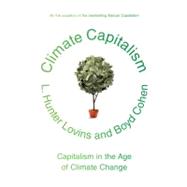
| Entrepreneuring the Solutions: The Business Case for Climate Protection | p. 3 |
| Energy Efficiency: Low-Hanging Fruit That Grows Back | p. 28 |
| Both Are Better: Energy Efficiency and Renewable Energy Unleash the New Energy Economy | p. 57 |
| Green Buildings, Green Neighborhoods: Where Climate Capitalism Lives | p. 95 |
| Moving On | p. 123 |
| World Without Oil | p. 147 |
| Growing a Better World | p. 178 |
| Carbon Markets: Indulgences, Hot Air, or the New Currency? | p. 220 |
| Adapting to Climate Chaos | p. 249 |
| A Future That Works | p. 272 |
| Appendix: How to Calculate and Offset Your Carbon Emissions | p. 309 |
| Notes | p. 311 |
| Acknowledgments | p. 367 |
| Index | p. 371 |
| Table of Contents provided by Ingram. All Rights Reserved. |
The New copy of this book will include any supplemental materials advertised. Please check the title of the book to determine if it should include any access cards, study guides, lab manuals, CDs, etc.
The Used, Rental and eBook copies of this book are not guaranteed to include any supplemental materials. Typically, only the book itself is included. This is true even if the title states it includes any access cards, study guides, lab manuals, CDs, etc.